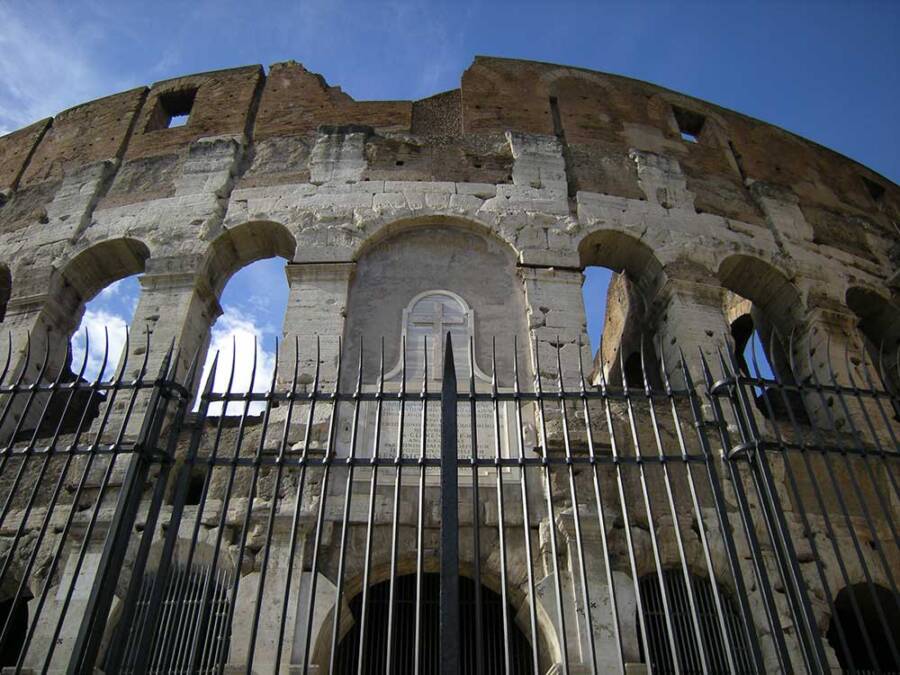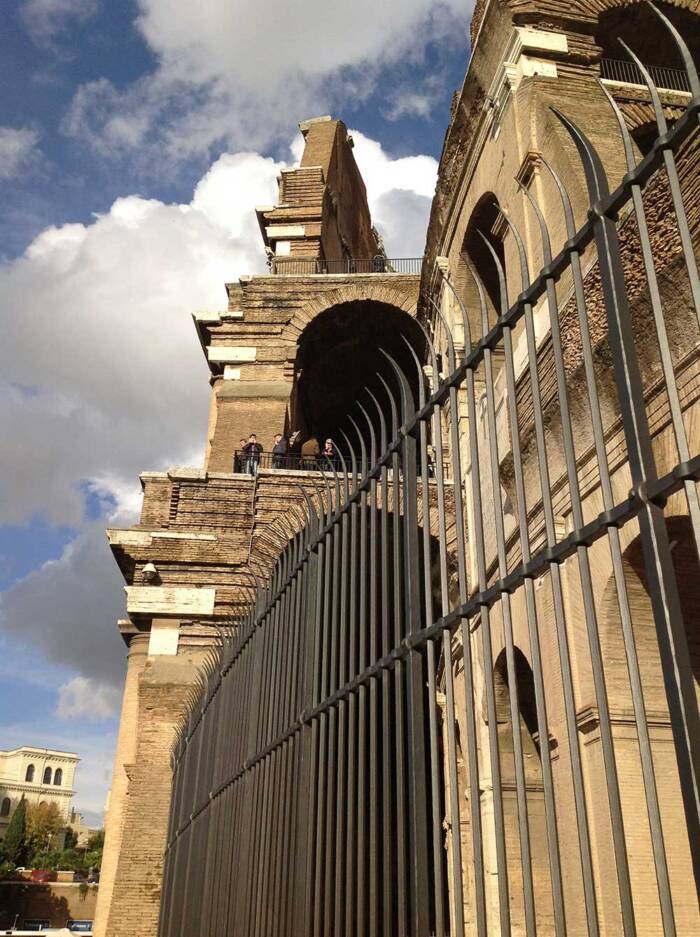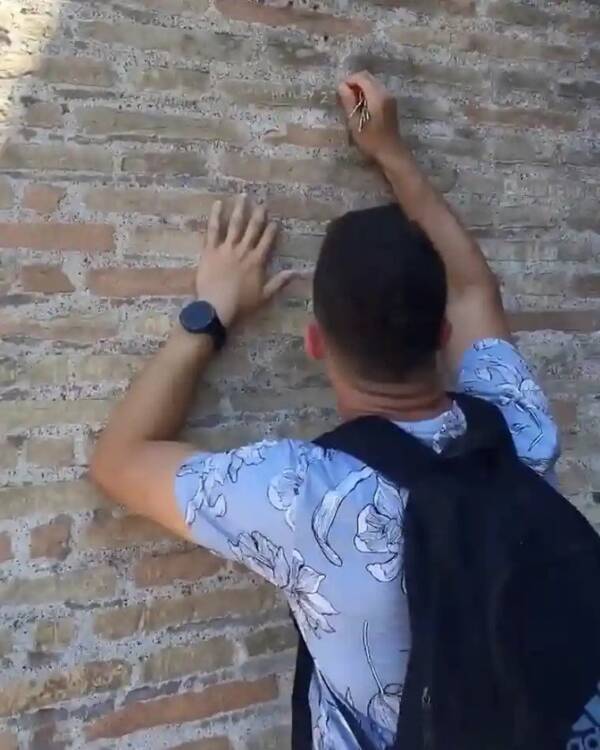The 47-year-old man is a U.S. citizen who is currently living in Taiwan, and he's expected to make a full recovery following emergency surgery.

Fucina Artistica BorangaA spiked, wrought-iron fence surrounding the Roman Colosseum.
After hopping a fence to take a photograph of the historic Roman Colosseum, an American tourist slipped and impaled himself on the barrier’s metal spikes.
For roughly 20 minutes, the 47-year-old man was unable to free himself, reportedly screaming in pain as other visitors watched in horror. However, despite his critical injuries, he’s expected to make a full recovery.
How A Tourist Became Impaled On A Fence In Rome
The incident occurred on Friday, May 2, around 5 p.m., according to Italian newspaper Il Messaggero. The American tourist, who currently resides in Taiwan, had presumably been trying to get a better view of the Colosseum when he decided to climb a fence in Piazza del Colosseo.
As he scaled the metal fence, he fell and was then skewered by the sharp spikes at the top. According to the report, the man then began screaming as he lost a great amount of blood. He continued to scream in pain until he lost consciousness, still dangling from the fence.
Paramedics quickly rushed to the scene to find that the man had suffered a severe lower back injury. Emergency responders sedated the man and then carefully removed him from the spikes and applied a tight bandage to his wound.

Fucina Artistica BorangaThe man suffered a devastating injury to his lower back.
“It was terrible,” one tourist told Il Messaggero in Italian. “I saw that man impaled on a railing and he couldn’t free himself.”
It took paramedics roughly 20 minutes to detach and stabilize the man, after which he was taken to Rome’s San Giovanni Hospital in critical condition. There, he underwent emergency surgery, receiving 80 stitches to close the wound.
The man was also reportedly unable to speak for several hours after the incident. Two days later, he was questioned by Italian law enforcement.
A twist in the story, however, came a day after initial reporting.
A Colosseum Spokesperson Denies The Incident

Anil Öztas/Wikimedia CommonsThe Roman Colosseum, which was built in 72 C.E., in 2024.
On May 6, Hyperallergic published an article claiming a spokesperson for the Colosseum denied that any such incident had occurred, calling the widely-reported narrative “fake news.”
According to the outlet, the spokesperson could not provide any further details, as “an investigation by the Italian police force is ongoing at the moment.”
The spokesperson further claimed that no tourist had attempted to climb the fence. They also emphasized that the fence was manned by dozens of staff members at the time of the purported incident. That said, it is unclear what, exactly, Italian police were investigating if these reports were indeed “fake news.”
While the truth surrounding this incident remains murky, it is not the only time in recent years that tourists have caused problems in Rome and beyond.
Other Troubles With Tourists In Italy

Ryan LutzA tourist carving his name into the Colosseum.
In June 2023, an American tourist named Ryan Lutz filmed a man carving “Ivan + Hayley 23/6/23” onto the wall of the Roman Colosseum with a set of keys. Lutz said he confronted the vandal after he noticed him “blatantly carving his name” into the 2,000-year-old monument.
A year prior, in 2022, three other tourist-related incidents made international headlines.
The first involved a tourist who pushed an electric scooter down Rome’s 18th-century Spanish Steps, causing €25,000 (around $28,100) worth of damage. Two other tourists, meanwhile, were reprimanded for riding motorized surfboards in Venice’s Grand Canal.

Polizia Roma CapitaleTourists riding down the Spanish Steps.
And in October 2022, an American tourist visiting the Vatican became enraged after he was denied an audience with Pope Francis, smashing two ancient Roman statues in an angry fit. That tourist, who was around 65 years old at the time, had also been cited previously for public indecency in the United States.
Italian authorities naturally take these sorts of incidents very seriously, and that they have become more common in recent years is a worrying trend. As this latest event illustrates, these behaviors are not only disrespectful to Italian history — but also quite dangerous.
After reading about the man who impaled himself on a fence at the Roman Colosseum, go inside the fearsome stories of 11 Roman gladiators who once fought at the ancient structure. Then, read all about the vicious animal battles known as venationes.





